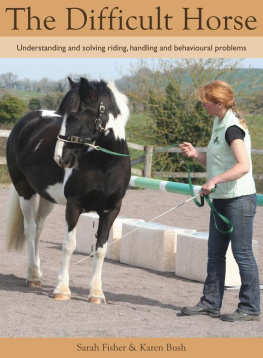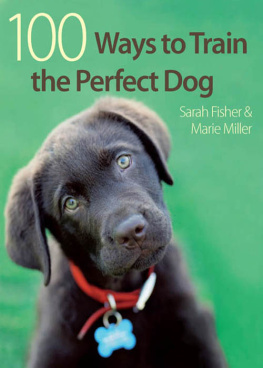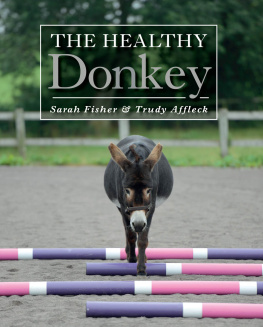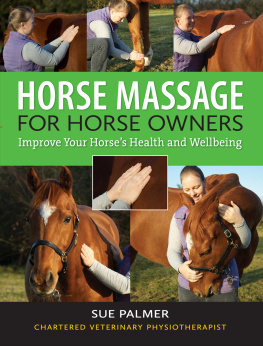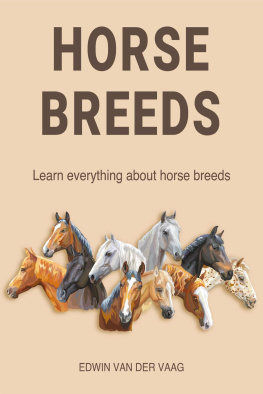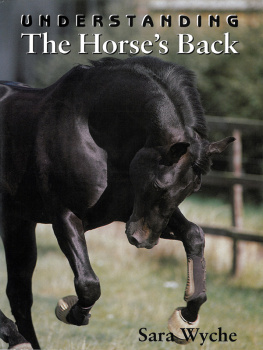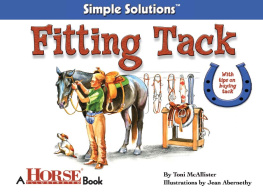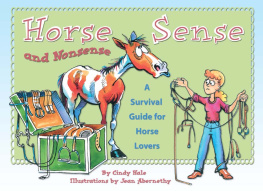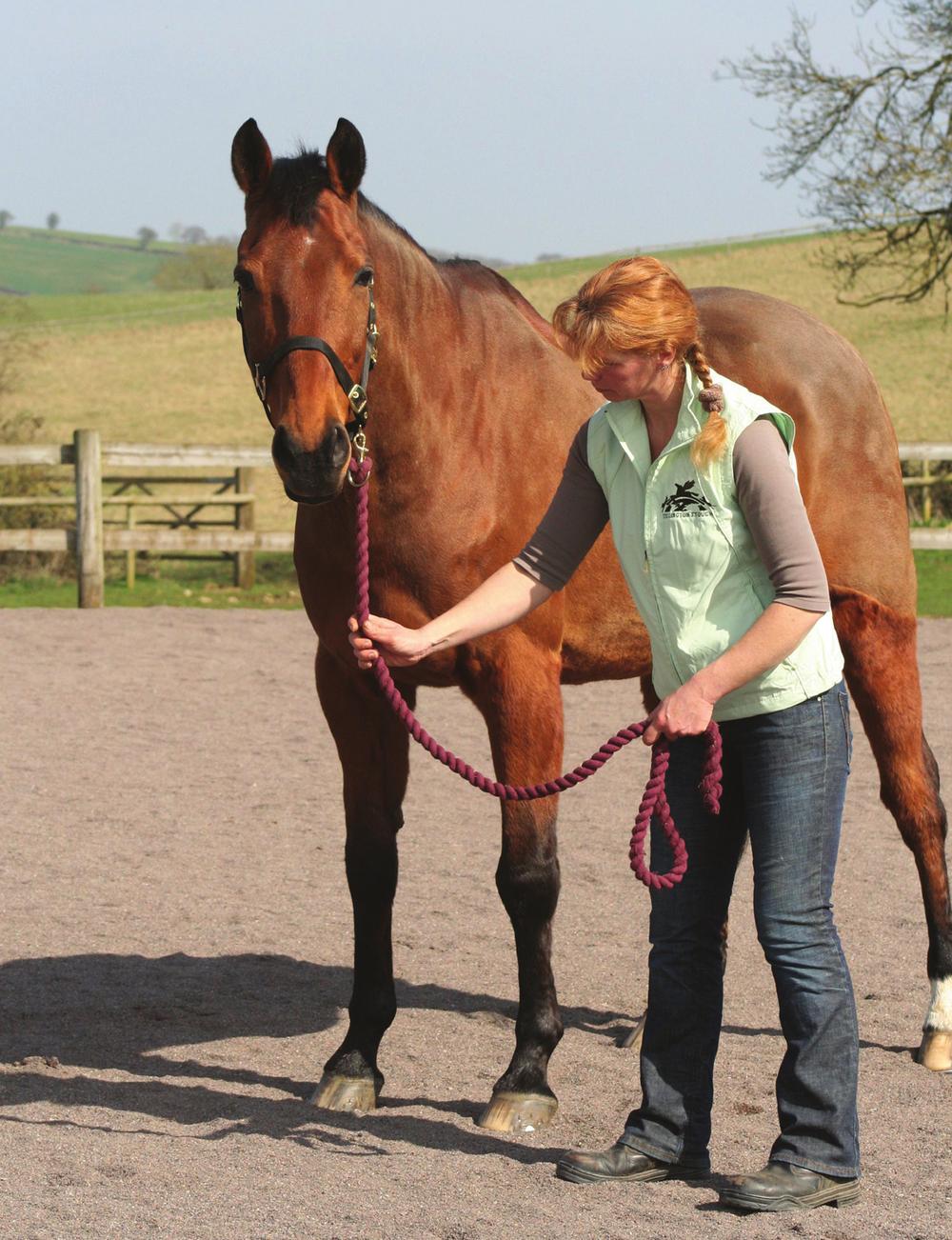First published in 2012 by
The Crowood Press Ltd
Ramsbury, Marlborough
Wiltshire SN8 2HR
www.crowood.com
This e-book edition first published in 2013
Sarah Fisher and Karen Bush 2012
All rights reserved. No part of this publication may be reproduced or transmitted in any form or by any means, electronic or mechanical, including photocopy, recording, or any information storage and retrieval system, without permission in writing from the publishers.
British Library Cataloguing-in-Publication Data
A catalogue record for this book is available from the British Library.
ISBN 978 1 84797 663 5
All photographs are Sarah Fisher and Bob Atkins, except those on pages 11 and 23, which are by Bob Atkins, courtesy of Horse & Rider magazine.
Dedication
For the Horse, our greatest teacher and valued friend Sarah
For Mum, with thanks for all the encouragement over the years Karen
Acknowledgements
Our thanks go to Linda Tellington Jones, Robyn Hood, Peggy Cummings, Tina Constance, Mags Denness, Shelley Hawkins, Vicki McGarva, Tuesday Lewis, Rachel Denness, Amanda-Jayne Bell and Alison Bridge at Horse & Rider magazine for their help with this book plus the horses Myrtle, Ginger, Equinox, Panj, Sage, Bailey, Wellington, Toto and Moomin.
Disclaimer
The authors and publisher do not accept any responsibility in any manner whatsoever for any error or omission, or any loss, damage, injury, adverse outcome or liability of any kind incurred as a result of the use of any of the information contained in this book, or reliance upon it.
I focus on working with the different personalities of each horse I ride, recognising that each one is an individual. I am continuously assessing where each horses strengths and weaknesses lie, encouraging them into different outlines to develop correct muscle structure. The neck must be free and supple and the hind legs need to be active. I want the horse to be responsive to a light aid at all times, whether I am asking for an upward or downward transition.
The two basic principles are the same, regardless of the age of the horse or its level of experience I want him to accept the leg and accept the rein, but I will vary the exercises according to the needs of each horse, as I want him to develop good physical balance and true self-carriage.
By sticking to those two principles, and ensuring that the hands are effective and elastic, the legs are effective and light, and that the aids are consistent, the horse is less confused. Both horse and rider can enjoy their time together, whether out hacking, schooling, jumping or competing in dressage, because the horse is happy and comfortable in his work. Even an Advanced horse may still be fearful of a competition environment, but he can become more confident in his rider and the environment if he understands that the partnership is strong via the correct use of the aids and good training has been established.
The Difficult Horse gives horse owners new ways of understanding the reasons for many unwanted behaviours, but perhaps more importantly it offers simple tools for change that anyone can learn. The aim of this book fits in with my own philosophy and beliefs; that a solid foundation and trust must be in place, that more complex tasks and movements should be developed slowly to ensure that softness and suppleness is maintained, that good balance is essential for physical and mental well being, and that battles can be avoided by going back a step at any stage in training if the horse is struggling with what he is being asked to do.
Lee Pearson CBE
Nine times Paralympic Dressage Gold Medallist at Sydney 2000, Athens 2004, Beijing 2008
Good horsemanship should look effortless, with horse and rider working in harmony to create a perfect partnership that is a pleasure to watch and a rewarding experience for both parties. This same principle should apply to all aspects of horse management.
Many problems occur because early warning signs that the horse was struggling were overlooked or ignored, or foundation steps in handling and training were rushed or not put in place at all. All horses benefit from a calm and quiet approach, but as unwanted behaviours begin to develop or become increasingly difficult to manage, our own fears and concerns can trigger more forceful handling. This in turn exacerbates the stress that the horse is already under, giving rise to more volatile reactions and the creation of new and more dangerous behaviours. It is this lack of understanding that causes the relationship between horse and man to break down, and compromises the horses natural willingness to be a co-operative partner. As Xenophon stated so wisely in 400BC: Where knowledge ends, violence begins.
There is always a reason for unwanted behaviour. The skill comes not in relying on force to push the horse through his difficulties, but in understanding the motive for that behaviour, and learning kind and effective techniques to help address his concerns. A horse that is able to think and to move freely through the body will be safer and easier to handle and ride than a horse that is stressed and/or physically compromised through ill-fitting equipment, inappropriate training and poor posture. Even if he lacks education, a horse that is calm is able to process and retain new information more easily than a horse that is tense, enabling you to work on advancing his skills rather than simply doing your best to work around or manage behavioural concerns on a daily basis.

Take time to observe your horse and understand his body language.
Horses, like humans, have different personalities and different capabilities. Taking time to observe your horse and to learn how he uses his body language to communicate with you will help you to take any necessary steps to ensure that he is happy and comfortable in every aspect of his life.
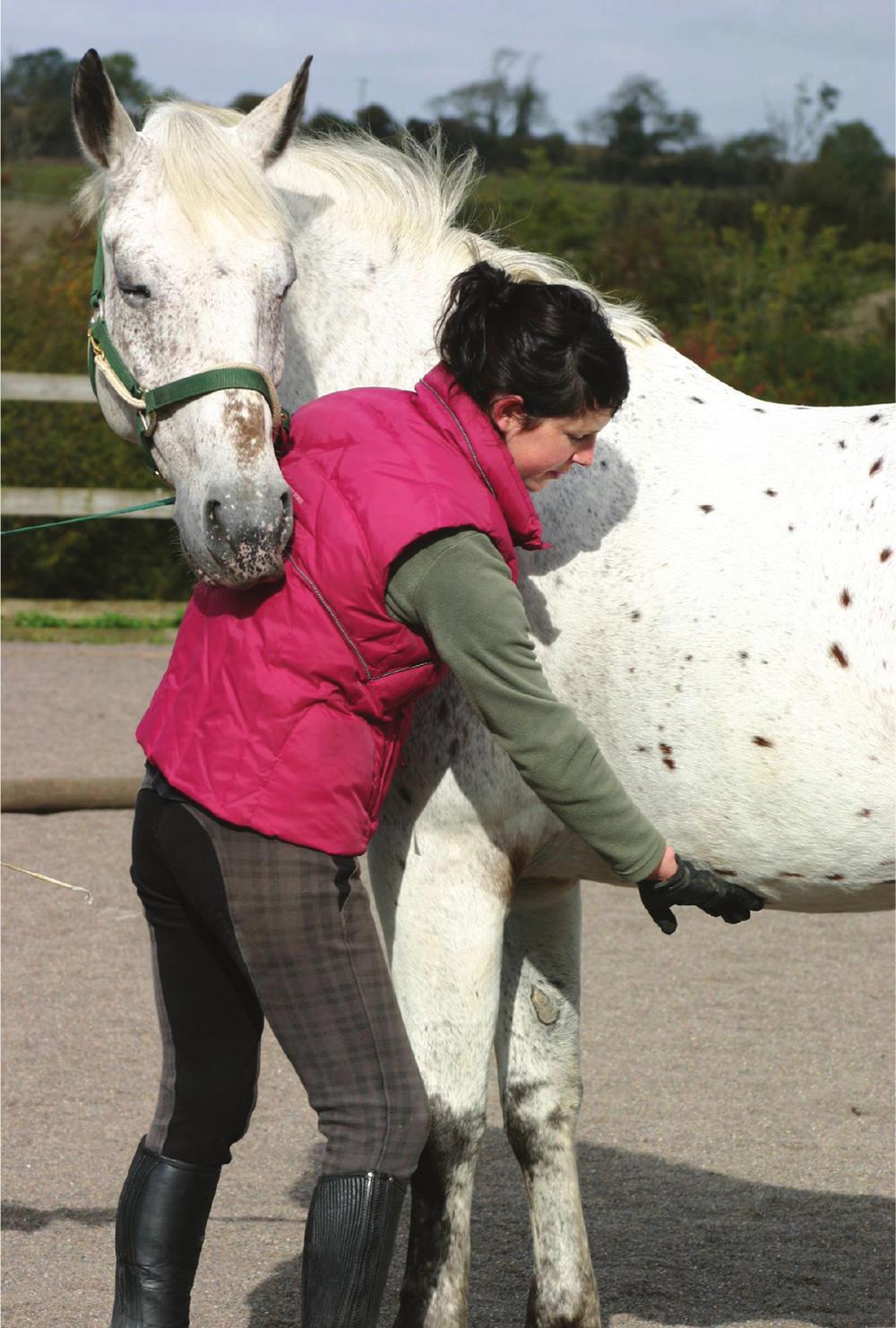
There is always a reason for unwanted behaviour; the owner needs to learn kind and effective techniques to address the horses concerns.
When working through a problem remember that all behaviours are connected. For example, a horse that always carries himself in a high-headed frame may find it hard to stand still for the farrier, may move off at the mounting block the moment your foot is in the stirrup, and spook, spin or nap when ridden. He may also be difficult to handle from the ground. Teaching your horse to lower his head and release his top line, and learning exercises that you can do in the stable, in hand and under saddle that will strengthen his back, enabling him to work more efficiently and effectively, will go a long way to helping you address all the connected and unwanted behaviours. You may need to adapt the way you ride, manage and care for your horse, as there may be several contributory factors such as poor dentition, saddle fit and foot balance but with increased knowledge you can help him reach his full potential whether you want a horse that is a pleasure to hack out in open countryside, or have more ambitious goals for yourself and your equine friend.

